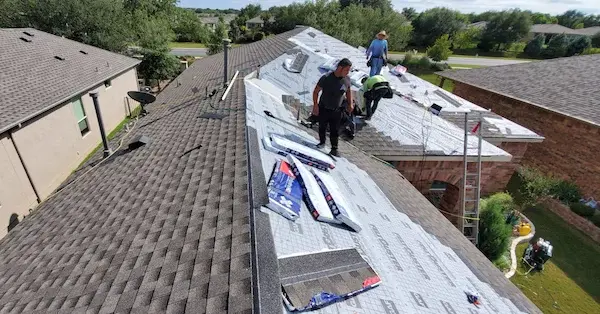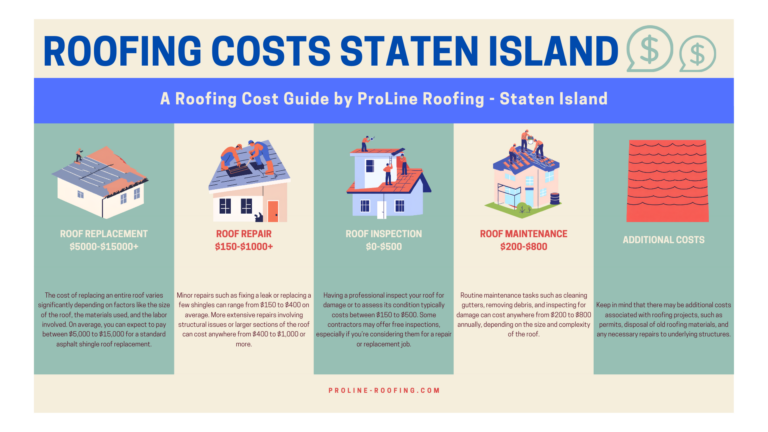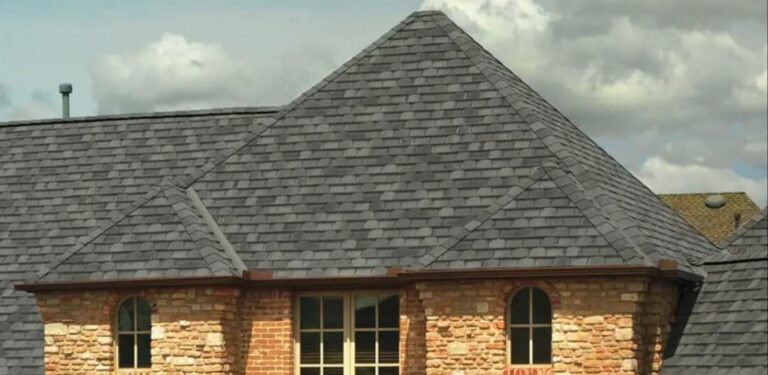A leaky roof in the middle of a January blizzard is enough to make any homeowner panic. Can you fix it right away, or are you stuck waiting for spring? Unfortunately, there’s no easy one-size-fits-all answer when it comes to winter roofing.
The truth is, several factors impact whether it’s safe and smart to tackle a roof project during our colder months. These include the severity of the problem, the type of roofing materials involved, and the often unpredictable nature of our winter weather.
Let’s break down the risks, the limited scenarios where winter roofing might work, and how to protect your home if you absolutely must wait for warmer temperatures.
Winter Roofing Risks
Winter weather isn’t just uncomfortable for roofers; it poses serious threats to the safety of the crew AND the long-term integrity of your roof. Here’s a breakdown of why:
Safety Matters
- Slippery Surfaces: Ice and snow significantly increase the risk of falls. A reputable roofer won’t risk their crew’s lives, or potential damage to your home, for a non-emergency job.
- Short Days: Reduced daylight hours mean work might rush near dusk, increasing the chance of mistakes that compromise safety and installation quality.
Material Limitations
- Brittle Shingles: Asphalt shingles lose flexibility below 40°F, making them prone to cracking during installation. Those tiny cracks might not leak immediately but create entry points for water damage down the road.
- Sealant Struggles: Many roofing adhesives and sealants require temperatures above 50°F to cure properly. If they don’t form a strong bond, you’re essentially paying for a roof that’s set up to fail.
The Warranty Problem
- Temperature Thresholds: Most shingle manufacturers have a minimum installation temperature (often around 40-50°F). Roofing outside that voids the warranty.
- No Protection: This means if your winter-installed roof leaks a year later, you could be footing the bill for a full re-do, not just a minor repair.
NY & NJ Factor: Our coastal winters bring unpredictable swings – a 20°F morning can turn into a 50°F afternoon with rain. This constant freeze-thaw cycle puts extra stress on roofing materials and makes proper installation nearly impossible.
When Winter Roofing MIGHT Work
It’s important to be realistic: in most cases, a major roof replacement in the dead of a Staten Island winter is a recipe for problems. However, there are a few exceptions where the job can be done safely and effectively:
Small-Scale Repairs
- Replacing a few missing shingles or patching a minor leak might be manageable if temperatures are above freezing for a sustained period and the roof isn’t overly icy or steep.
Emergency Tarping
- When a leak is causing active water damage inside your home, a temporary tarp can help prevent things from getting worse. This buys you time until conditions improve for a proper fix.
Specialized Materials
- Certain commercial roofing systems (like EPDM rubber or modified bitumen) are less temperature-sensitive. These are less common on residential homes, but it’s worth knowing about if you have a flat roof.
The Contractor Factor
- When a leak is causing active water damage inside your home, a temporary tarp can help prevent things from getting worse. This buys you time until conditions improve for a proper fix.
- Not all roofers are created equal. Some do have the experience, equipment, and specialized materials to handle limited cold-weather work.
- Key Questions to Ask: Do they have crews trained in winter safety? Do they offer alternative warranties if temperatures force installation outside the manufacturer’s ideal range?
Tri-State Area Tip: If you’re facing a winter roof emergency, get multiple opinions from local roofers. This lets you compare their approach and their honesty about the risks involved.
What to Do If You MUST Roof in Winter
Sometimes, despite the risks, a roof problem simply can’t wait until spring. If you find yourself in that situation, here’s how to minimize the potential for disaster:
- Prioritize Experienced Cold-Weather Roofers: This isn’t the time to go with the cheapest quote. Ask about their specific experience with winter projects, safety protocols, and if they can address the warranty issue transparently.
- Be Prepared for Delays: Our Staten Island weather is unpredictable. Even with the best planning, a job might start and then be forced to shut down for days or even weeks due to snow, ice, or extreme temperatures.
- Explore Temporary Fixes:
- Interior Containment: If a small leak is the issue, strategically placed buckets and tarps inside your attic can prevent major damage to ceilings and walls below.
- Ask About “Hybrid” Repairs: Some experienced roofers may be able to combine temporary fixes with partial fixes using materials that hold up better in the cold.
- Focus on Prevention: Once your immediate crisis is handled, get a thorough roof inspection to identify other potential problems that can be addressed BEFORE next winter hits.
ProLine Winter Check-Up: We offer detailed roof inspections even in cold weather, helping you catch issues early and avoid future emergencies.
Winter roofing in Staten Island is rarely the ideal scenario. But knowledge is power! Whether you were lucky enough to get your roof repaired safely or are now motivated to prevent future winter emergencies, the key takeaway is to be proactive.
- Plan Ahead: The best time to fix a roof is BEFORE it becomes a crisis. Regular inspections and preventative maintenance go a long way in minimizing the chance of needing a major project during the worst weather months.
- Weathering Winter Worries with ProLine: We’re here year-round, from emergency repairs to thorough inspections that help you stay ahead of problems. And when it IS time for a roof replacement, we’ll guide you through the process with an honest assessment of whether it can wait for ideal conditions.
Ready to Get Proactive? Contact us for a free roof assessment and let’s protect your Staten Island home for winters to come!




